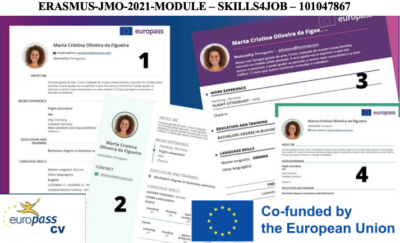If you want to apply for a job in any European country, you need to consider all the important nuances of the required documents for this process. The Europass CV is one of the most recognized resume formats in Europe. The safest way to apply for a job in the EU is by using the Europass CV format. However, to do this correctly, you need to have a good understanding of what this format offers.
What is the Europass Curriculum Vitae (CV)?
The Europass CV is one of the most recognized resume formats in Europe, helping to effectively present your skills and qualifications. It is part of a set of five documents developed by European institutions to allow EU citizens and long-term residents to present their identity, qualifications, and skills in a standardized way. This ensures that the documents are easily understandable for employers across Europe, as the Europass initiative includes EU member states, candidate countries, and some countries in the European Free Trade Association. It’s worth noting that the Europass CV can also be used outside of Europe.
Important information about Europass and the Europass CV for everyone, including students, young professionals, and employers, can be found on the website of the National Europass Center.
How to Create Your Own Europass CV?
The Europass form is available to everyone online on the Europass portal, and you can fill it out for free using the Europass CV builder. You can use it to apply for jobs, education or training programs, and even volunteer opportunities.
First, you need to create your profile in Europass with information about your education, training, work experience, and skills. Once your Europass profile is complete, you can create other CVs for yourself in just a few steps. Simply choose the information you want to include, select a design, and Europass will handle the rest.
You can create, save, and share your CV in 30 different languages. You can download it, save it in your Europass library, and share it with employers, the EU member states’ employment service network, or other job listing platforms.
Tips for Writing a Europass CV
If you are determined to create your Europass CV or if your potential employer requires one, here are a few simple tips for writing it effectively.
– Use short sentences when describing your academic and professional experience. Employers should be able to understand within 15 seconds of reading your Europass CV why you might meet their needs.
– Describe your competencies and qualifications in detail. Presenting this information logically can help you stand out among other candidates.
– Use reverse chronological order. Always list your most recent experience first, followed by previous positions. If you have long gaps in employment or education, add an explanation.
– Make your text compelling and easy to read. Ensure that you use strong action verbs and vivid adjectives to describe why you are the best candidate for the job through your qualifications, achievements, and skills.
– Check the job listing for important keywords.You should use keywords in your text to catch the hiring manager’s attention and pass through the Applicant Tracking System (ATS) that the company may use for preliminary screening.
– Be concise. Try to keep your Europass CV to one or two pages.
– Carefully proofread your CV for spelling, grammar errors, inconsistent punctuation, and the accuracy of your contact information.
When you finish writing your Europass CV, it’s always helpful to ask someone to review it. Thoroughness and clarity in your Europass CV are crucial to your success in finding a job in the European Union. Remember that your CV is your first opportunity to showcase your skills and experience to prospective employers. It’s a snapshot of who you are, your skills, education, work experience, and other achievements.
Funded by the European Union. Views and opinions expressed are however those of the author(s) only and do not necessarily reflect those of the European Union or the European Education and Culture Executive Agency (EACEA). Neither the European Union nor EACEA can be held responsible for them
